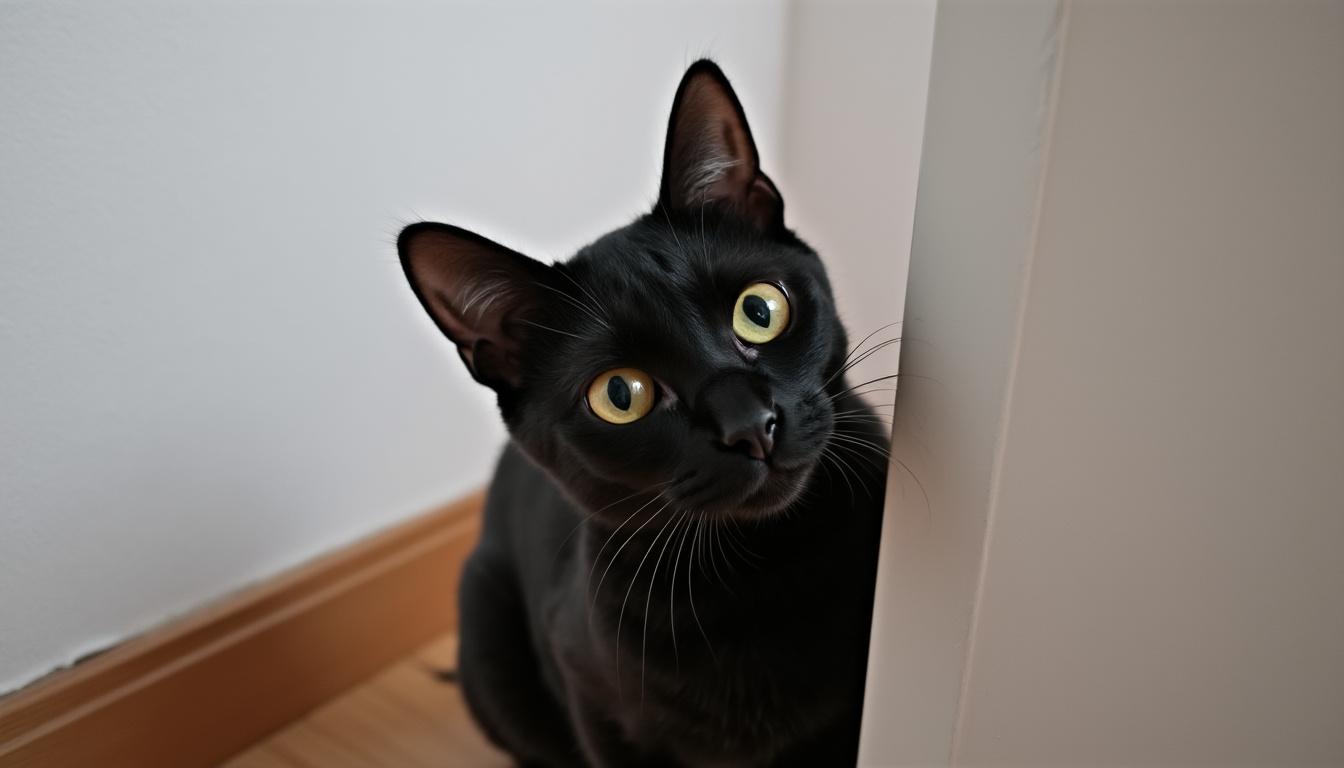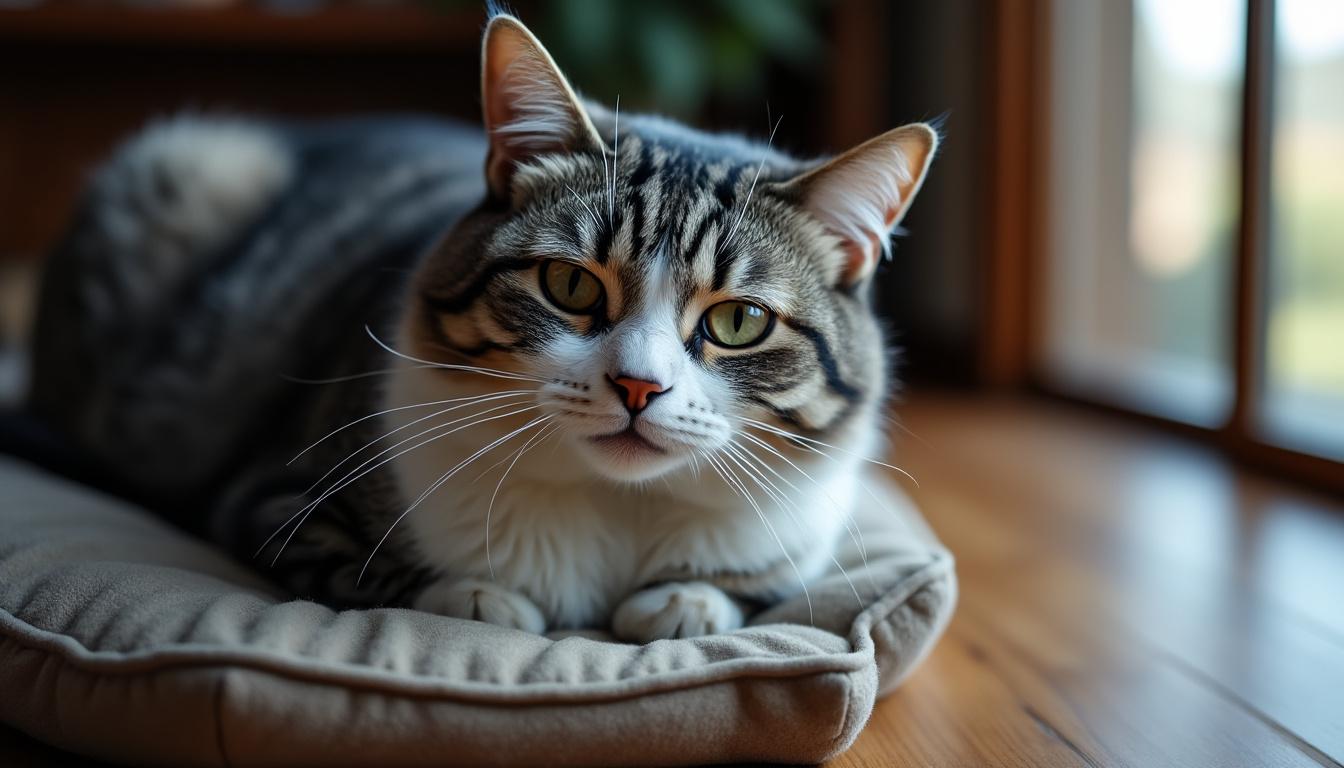Every cat owner knows that our feline friends can often seem downright weird. One particularly puzzling behavior is when they inexplicably fixate on seemingly empty spaces. If you’ve ever caught your whiskered companion peering intently at a blank wall or an empty corner, you’re not alone. Many pet parents have stared in confusion alongside their furballs, wondering just what on earth they could possibly be seeing. This article touches on the nuances of this niche behavior while shedding light on what cats are really focusing on when they appear to be observing nothing. Prepare to delve deep into the mysterious mind of our furry companions.
In brief:
- 🎯 Cats often see, smell, or hear things that escape human perception.
- 👀 Their superior senses amplify stimuli we typically do not notice.
- 🧠 Cognitive dysfunction can appear in senior cats, leading to frequent staring.
- ⚡ Seizures and hyperesthesia are potential medical conditions behind this behavior.
- 🏡 Your home environment can inadvertently contribute to this behavior.
What Cats Actually See When They Stare at Nothing
When you catch your cat locked in a silent stare, it’s not just due to their love for pondering life’s mysteries. Cats navigate their world using exceptional sensory abilities that often elude us. Their vision, hearing, and smell are far more developed than humans, allowing them to perceive subtle changes in their environment.
Exceptional Night Vision
Cats are crepuscular creatures, meaning they’re most active at twilight. They possess a greater number of rod cells in their retinas, which significantly enhances their ability to see in low-light conditions. You might assume that a dark corner is just that—a dark corner. But for your cat, it could be a bustling playground filled with shadows and small movements, such as the flutter of a moth or a rustling of leaves.
Ultraviolet Light Perception
Believe it or not, cats can see ultraviolet light, which is invisible to humans. This means that the stains from spilled drinks, the patterns on certain fabrics, or even the traces left behind by other animals could trigger a captivating scene in your cat’s eyes. Their world is a kaleidoscope of lights and colors that we mere mortals have no means to comprehend.
Hyper-Sensitive Peripheral Vision
With a visual field covering around 200 degrees compared to a human’s 180, cats can pick up movements occurring outside our focus area. This allows them to notice the tiniest of disturbances—a flicker of light through a window or the darting motion of an insect—as they seem fixated on ‘nothing’ at all.
| Sense | Human Capability | Cat Capability |
|---|---|---|
| Vision | Narrow field of view and limited low-light vision | Extensive peripheral vision and superior night vision |
| Sound | Up to 20,000 Hz | Up to 64,000 Hz |
| Smell | Ordinary sensitivity | 14 times better than humans |

Common Reasons Cats Stare at Empty Spaces
Staring at walls or empty corners doesn’t always stem from a mystical place. Many cats stare because of external stimuli that remain hidden from us. Getting a handle on what compels them to gaze so intensely can be immensely helpful for cat lovers. Let’s break down some common triggers for this behavior.
Tiny Insects and Small Creatures
Flies, gnats, and even spider legs can draw your cat’s attention like a moth to a flame. Cats can detect these tiny movements long before we can, often leaving them transfixed, watching the minuscule creature as it weaves through the air. Have you ever noticed your cat staring at an empty space like it’s watching a live movie? There’s a good chance they’ve spotted something barely visible to us.
Light Reflections and Shadows
On a sunny day, light bouncing off reflective surfaces creates shifting patterns that cats find fascinating. A mere glimmer from your watch or a beam sneaking through the curtains can easily hold their attention for extended periods. When you observe your cat in such a moment, they play a role akin to that of an ancient hunter, zeroing in on their next target.
- 🐞 Tiny insects can cause an intense focus
- 🌟 Reflected light can appear like moving creatures
- 🔊 Hidden sounds can prompt a sudden fixation
- 👃 Interesting scents can lead to prolonged staring
| Triggers of Cat Staring | Examples | Type of Behavior |
|---|---|---|
| Tiny Insects | Flies, ants | Intense observation |
| Light Reflections | Watch, phone | Focused attention |
| Sounds | Pipes, distant noises | Alert behavior |
When Cat Staring Behavior Signals Health Issues
While most staring has logical explanations, there are instances where this behavior can suggest underlying health problems. Understanding these potential issues can help you decipher when a vet visit is in order.
Cognitive Dysfunction in Senior Cats
For our aging feline friends, cognitive dysfunction can manifest itself similarly to dementia in humans. As cats grow older, you might find them staring into space, wandering aimlessly, or becoming disoriented. If such behaviors suddenly increase, it’s a signal to speak with a vet.
Seizures and Hyperesthesia
At times, staring could be a result of seizures. Although rare, a condition called feline hyperesthesia can cause extreme sensitivity leading to unusual behaviors, including intense staring. This can include episodes of excessive grooming or tail chasing. In both cases, knowing the warning signs is essential.
- 🧠 Cognitive dysfunction may lead to:
- Aimless wandering
- Getting lost
- Inappropriate elimination
- Aimless wandering
- Getting lost
- Inappropriate elimination
- ⚡ Signs of seizures include:
- Facial twitches
- Excessive licking
- Sudden aggression
- Facial twitches
- Excessive licking
- Sudden aggression
| Health Issue | Behavioral Signs | Action |
|---|---|---|
| Cognitive Dysfunction | Aimless wandering, confusion | Visit a vet for evaluation |
| Seizures | Staring, twitching | Seek immediate veterinary care |
| Hyperesthesia | Intense grooming, tail chasing | Exam to rule out cause |

How Your Home Environment Affects Cat Staring
Did you know that your home environment plays a crucial part in the behaviors exhibited by your cats? Various factors, from sound to lighting, can capture your cat’s undivided attention.
Sound Transmission Through Walls
Modern construction can amplify sounds, making unnoticed noises more detectable to a cat’s sensitive ears. Plumbing sounds or even distant footsteps can trigger a staring session as your cat tries to determine the source of the sound.
Lighting and Flicker
Flickering lights can stimlate curious behavior. Cats are more sensitive than humans to various forms of light, including those emitted by LED bulbs. This can lead them to observe areas where they perceive constant activity based on light changes.
- 🔊 Modern homes amplify sounds, causing curious stares.
- 💡 Flickering lights can over-stimulate feline senses.
- 👃 Certain scents in your home could draw their focus.
| Environmental Factor | Impact on Staring |
|---|---|
| Sound | Catalyzes curiosity and exploration |
| Lighting | Prompts attentive and focused behavior |
| Scent | Can attract interest to specific areas |
Why does my cat stare at walls for long periods?
It’s often due to stimuli like tiny creatures or sounds that we can’t perceive.
Is it normal for cats to stare at nothing frequently?
Yes, this behavior is typically normal and stems from their acute senses picking up unseen elements.
How can I tell if my cat’s staring is a health concern?
Increased duration of staring, along with other behavioral changes, could signal health issues needing vet attention.
What can I do to help my cat with excessive staring?
Investigating the sources of their interest can help, as well as providing stimulation through play.
Do indoor cats stare more than outdoor cats?
Yes, indoor cats have fewer natural distractions, causing them to focus on subtler stimuli.

